Anshul
●
June 23, 2025

When you hear algae, you probably picture that green slimy stuff floating in ponds or sticking to walls during rainy days. But here’s the thing - algae are not just pond dirt. They’re actually super useful little organisms that do way more than we give them credit for.
From producing oxygen to ending up in your toothpaste, ice cream, or even future biofuels, algae are everywhere.
In this blog, we’ll keep it simple and cover what algae are, the types, where they live, and why they’re important and sometimes harmful too. So if algae always feels boring in class, don’t worry - we’ll make it easy and student-friendly.
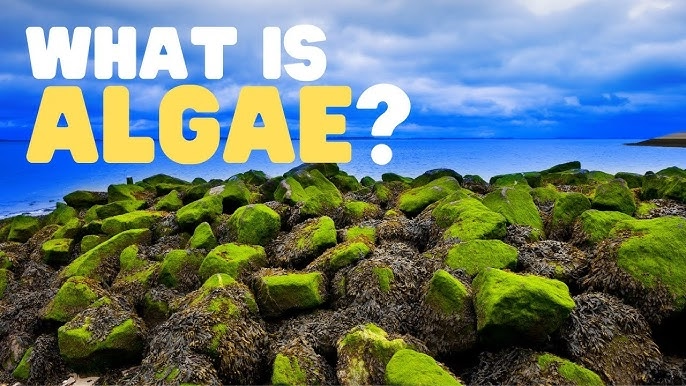
Algae are simple, plant-like organisms that are mostly found in water. They can be as tiny as a single cell or as large as seaweed stretching across rocks at the beach. Unlike higher plants, algae don’t have roots, stems, or leaves, but they can still make their own food through photosynthesis using sunlight, carbon dioxide, and water.
The word "algae" (singular: alga) comes from Latin, meaning "seaweed". In everyday language, the algae meaning in English refers to a group of living things that grow in both freshwater and marine environments. They can be green, red, brown, or even blue-green, and play a major role in producing oxygen and supporting aquatic life.
In science, when we define algal organisms, we include everything from tiny microscopic species like phytoplankton to larger, more visible forms like kelp. Algae are vital to the Earth's ecosystems, especially because they form the base of many food chains in water and produce a large portion of the world's oxygen.
Algae are classified into different types based on their colour, pigments, storage materials, and structure. Each type plays a unique role in the environment and can be found in various aquatic habitats. Understanding the types of algae is an important part of learning their biological importance.
Many species of Porphyra, Laminaria and Sargassum are among the 70 species of marine algae used as food. Certain marine brown and red algae produce large amounts of hydrocolloids (water-holding substances), e.g., algin (brown algae) and carrageenan (red algae) which are used commercially.
Agar, one of the commercial products obtained from Gelidium and Gracilaria, is used to grow microbes and in preparations of ice creams and jellies. Chlorella, a unicellular alga rich in proteins, is used as a food supplement even by space travellers. The algae is divided into three main classes:
1. Chlorophyceae
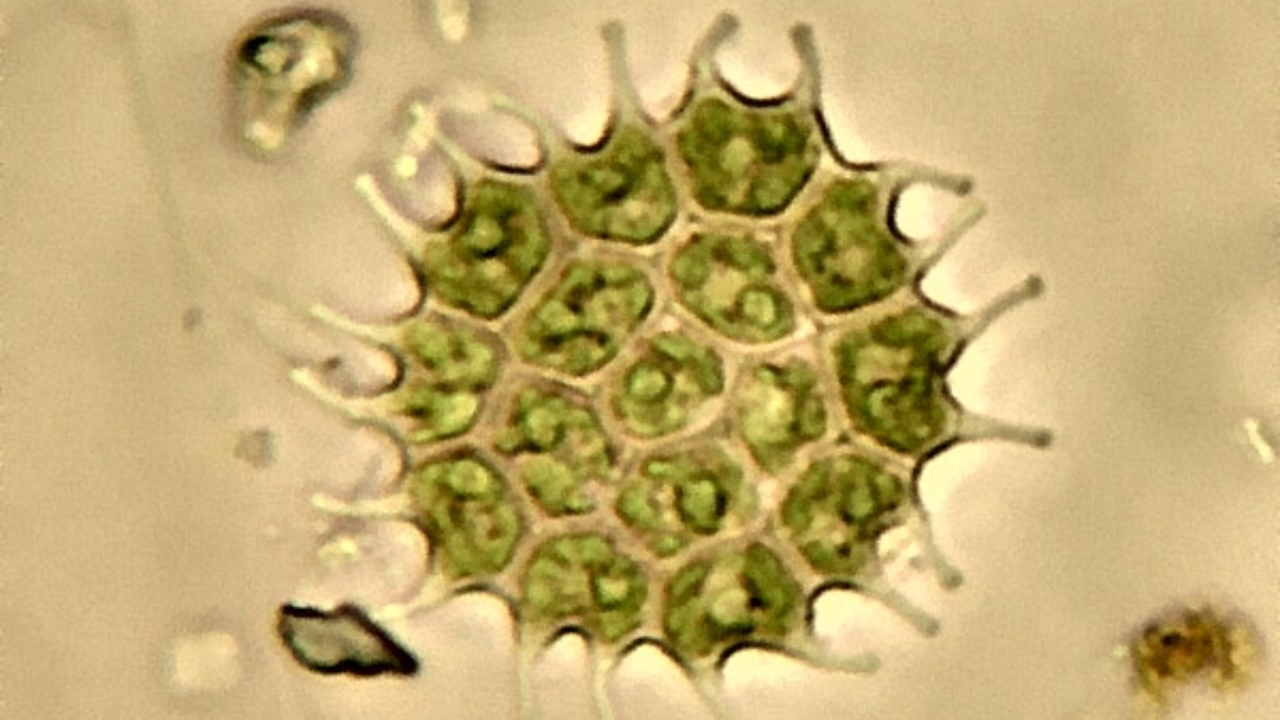
The members of Chlorophyceae are commonly called green algae. The plant body may be unicellular, colonial or filamentous. They are usually grass green due to the dominance of pigments chlorophyll a and b. The pigments are localised in definite chloroplasts.
The chloroplasts may be discoid, plate-like, reticulate, cup-shaped, spiral or ribbon-shaped in different species. Most of the members have one or more storage bodies called pyrenoids located in the chloroplasts. Pyrenoids contain proteins besides starch. Some algae may store food in the form of oil droplets.
Green algae usually have a rigid cell wall made of an inner layer of cellulose and an outer layer of pectose. Vegetative reproduction usually takes place by fragmentation. Asexual reproduction is by flagellated zoospores produced in zoosporangia.
Sexual reproduction shows considerable variation in the type and formation of sex cells and it may be isogamous, anisogamous or oogamous. Some commonly found green algae are: Chlamydomonas, Volvox, Ulothrix, Spirogyra and Chara.
2. Phaeophyceae
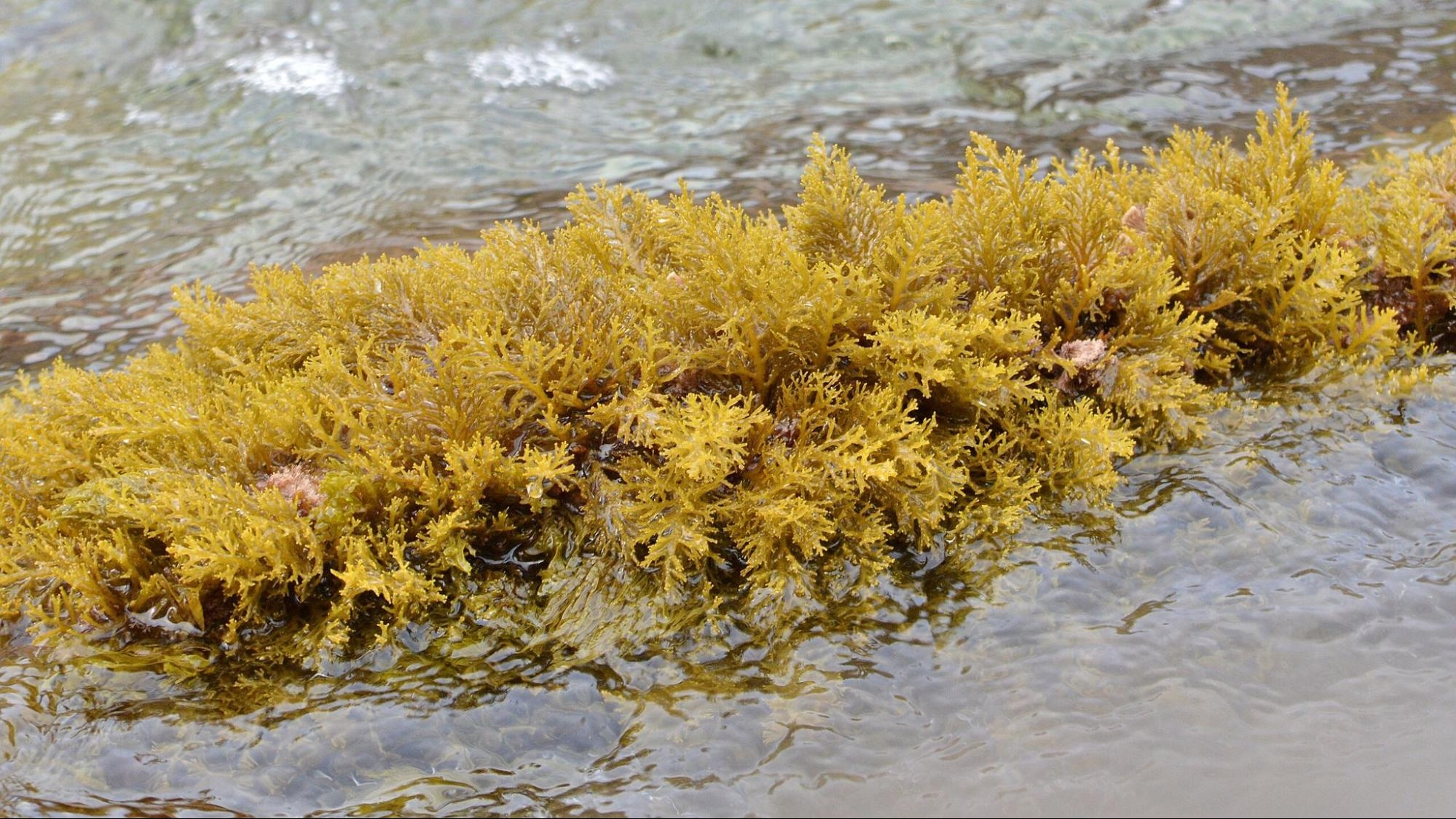
The members of phaeophyceae or brown algae is found primarily in marine habitats. They show great variation in size and form. They range from simple branched, filamentous forms (Ectocarpus) to profusely branched forms as represented by kelps, which may reach a height of 100 metres.
They possess chlorophyll a, c, carotenoids and xanthophylls. They vary in colour from olive green to various shades of brown depending upon the amount of the xanthophyll pigment, and fucoxanthin present in them. Food is stored as complex carbohydrates, which may be in the form of laminar or mannitol.
The vegetative cells have a cellulosic wall usually covered on the outside by a gelatinous coating of algin. The protoplast contains, in addition to plastids, a centrally located vacuole and nucleus.
The plant body is usually attached to the substratum by a holdfast and has a stalk, the stipe and leaf-like photosynthetic organ – the frond. Vegetative reproduction takes place by fragmentation. Asexual reproduction in most brown algae is by biflagellate zoospores that are pear-shaped and have two unequal laterally attached flagella.
Sexual reproduction may be isogamous, anisogamous or oogamous. The union of gametes may take place in water or within the oogonium (oogamous species). The gametes are pyriform (pear-shaped) and bear two laterally attached flagella. The common forms are Ectocarpus, Dictyota, Laminaria, Sargassum and Fucus.
3. Rhodophyceae
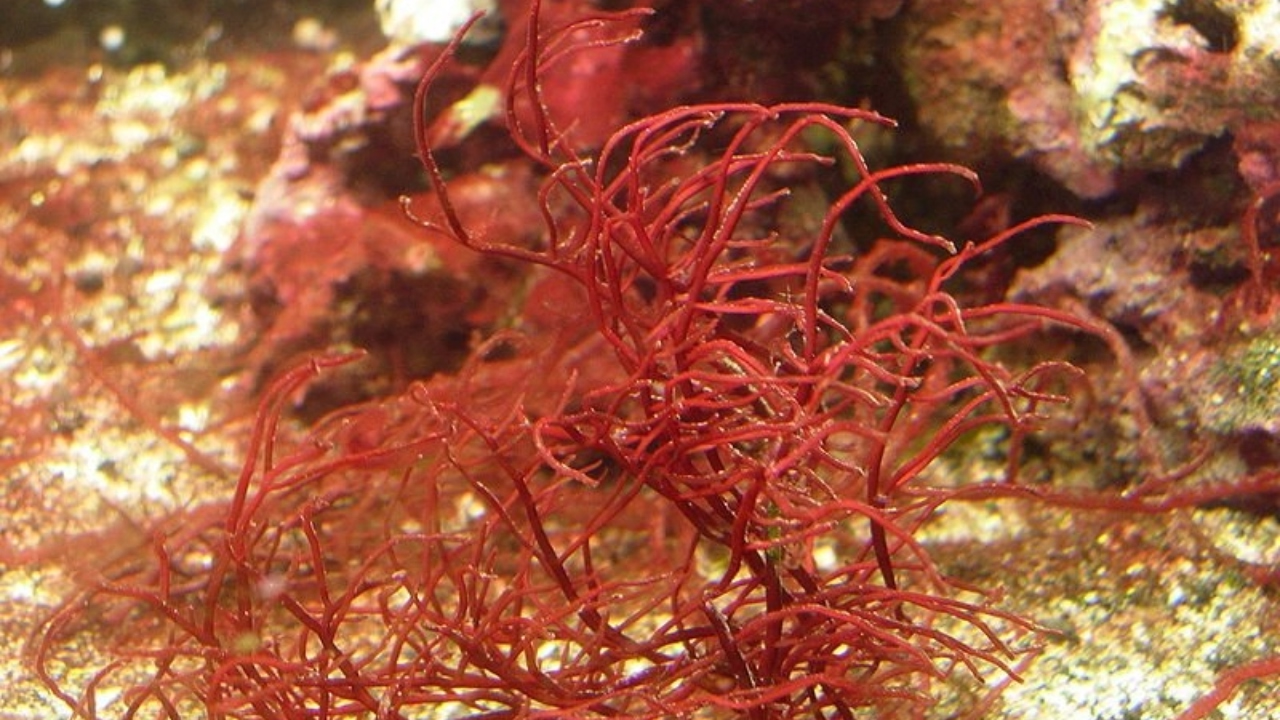
The members of Rhodophyceae are commonly called red algae because of the predominance of the red pigment, r-phycoerythrin in their bodies. The majority of the red algae is marine with greater concentrations found in the warmer areas. They occur in both well-lighted regions close to the surface of water and also at great depths in oceans where relatively little light penetrates.
The red thalli of most of the red algae is multicellular. Some of them have complex body organisation. The food is stored as floridean starch which is very similar to amylopectin and glycogen in structure.
The red algae usually reproduce vegetatively by fragmentation. They reproduce asexually by non-motile spores and sexually by non-motile gametes. Sexual reproduction is oogamous and accompanied by complex post-fertilisation developments. The common members are: Polysiphonia, Porphyra, Gracilaria and Gelidium
4. Cyanobacteria
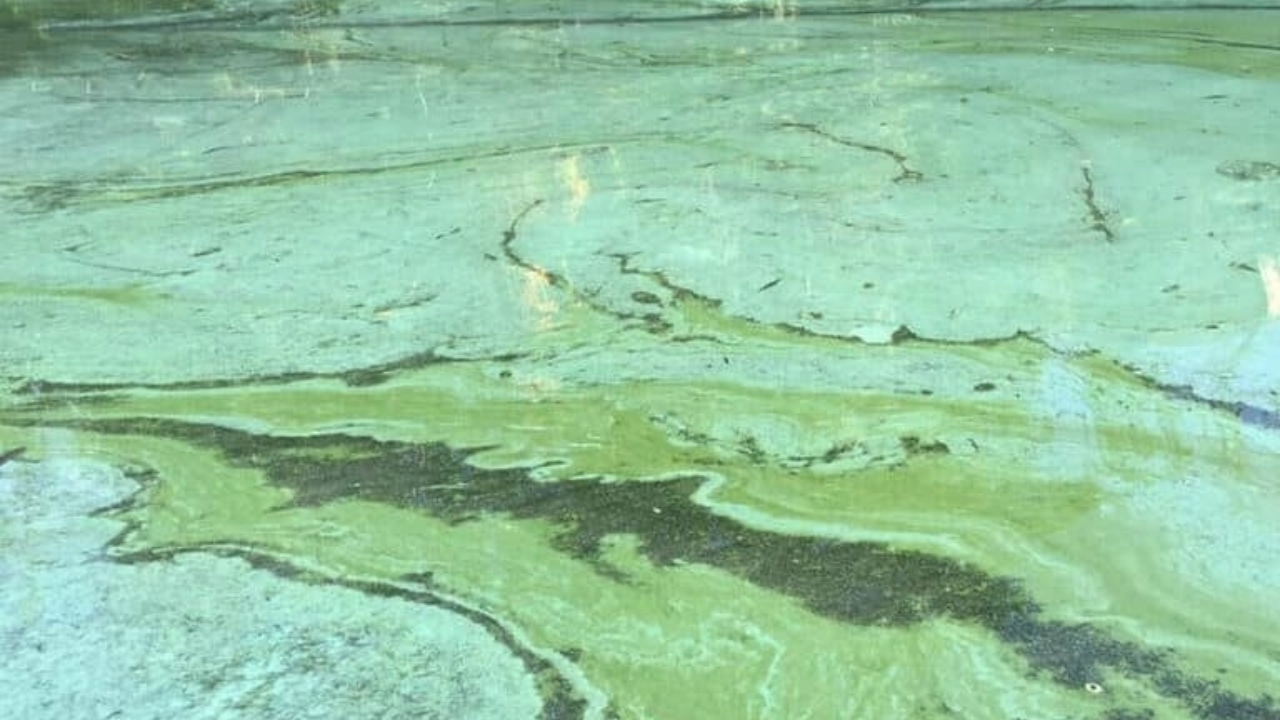
Cyanobacteria, also known as blue-green algae, are microscopic organisms found in water and moist environments. Although they are called algae, they are actually bacteria that can perform photosynthesis—just like plants. The cyanobacteria definition includes prokaryotic cells (cells without a true nucleus) that use sunlight to produce their own food and release oxygen as a by-product.
These organisms are among the oldest life forms on Earth and played a ajor role in creating the oxygen-rich atmosphere we have today. Cyanobacteria can live in extreme conditions, including hot springs and deserts, and are often found in freshwater ponds, lakes, and even on damp soil.
Some types of cyanobacteria help in nitrogen fixation, improving soil fertility. However, in polluted water, they can grow rapidly and cause algal blooms, which may be harmful to aquatic life.
Algae live in a variety of environments, and one of the simplest ways to classify them is by where they grow. The types of algae based on habitat help us understand how different algae adapt to their surroundings and play unique roles in nature.
Here are the main types:
1. Aquatic Algae
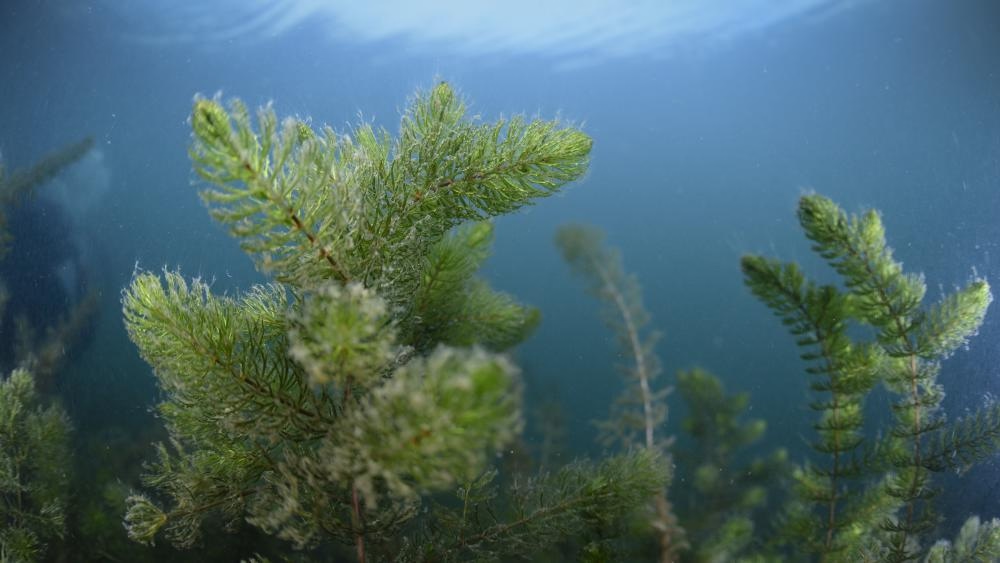
These algae live in water—either fresh or marine—and are the most common type.
2. Terrestrial Algae
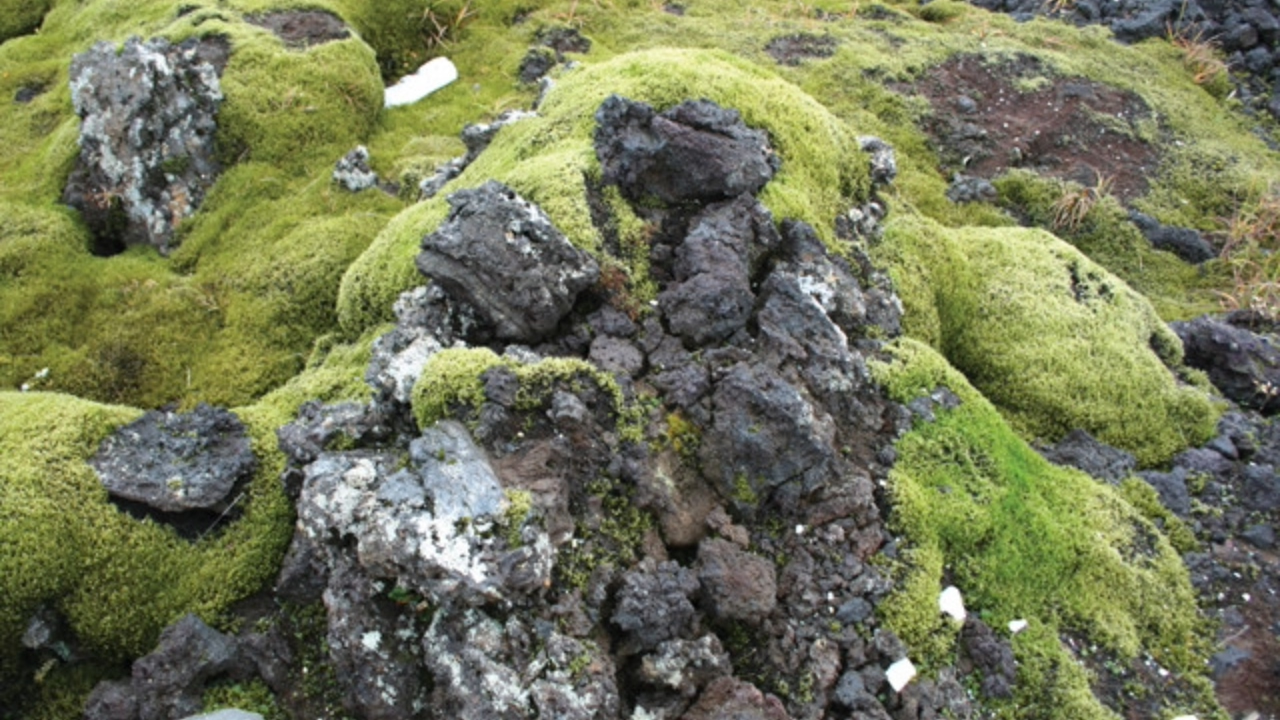
These algae grow on moist soil, tree bark, rocks, or even walls, especially in damp areas. Examples: Nostoc, Gloeocapsa
3. Snow Algae

These algae live in cold, snowy regions and often give snow a red or green tint due to pigments. Examples: Chlamydomonas nivalis
4. Thermal Algae
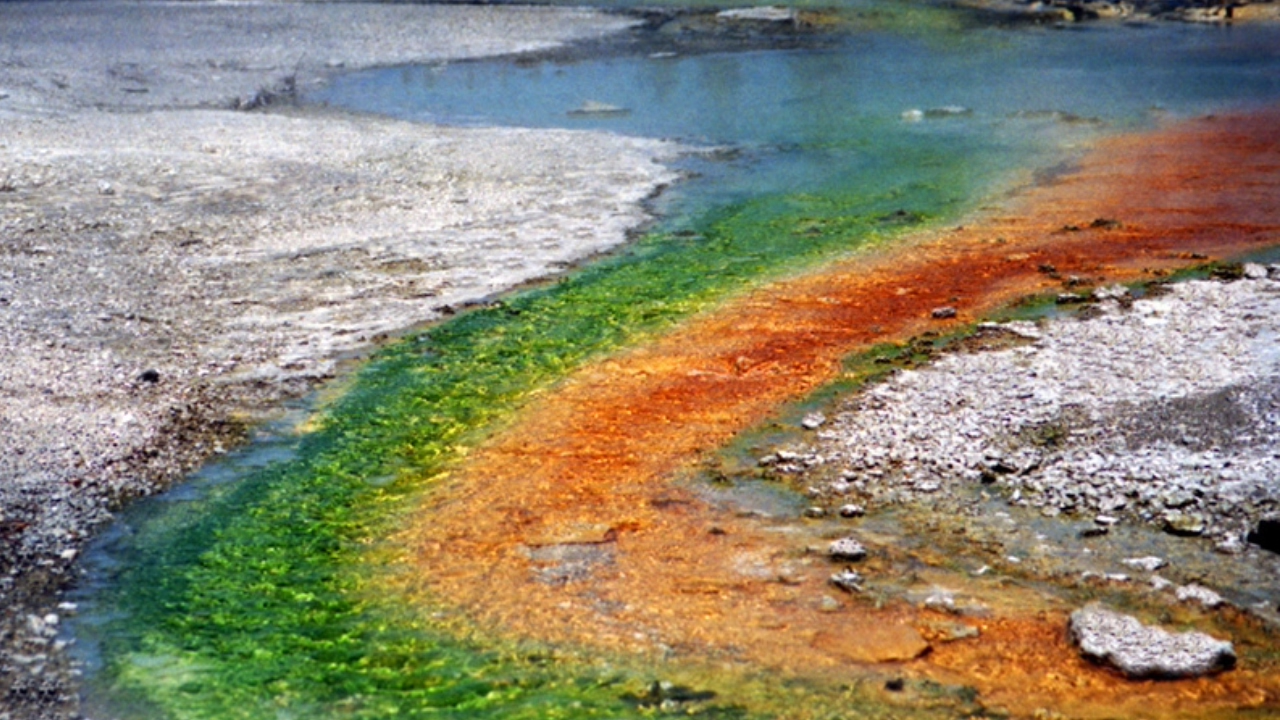
Found in hot springs and warm water bodies, they can survive high temperatures. Examples: Some species of cyanobacteria like Oscillatoria
5. Symbiotic Algae
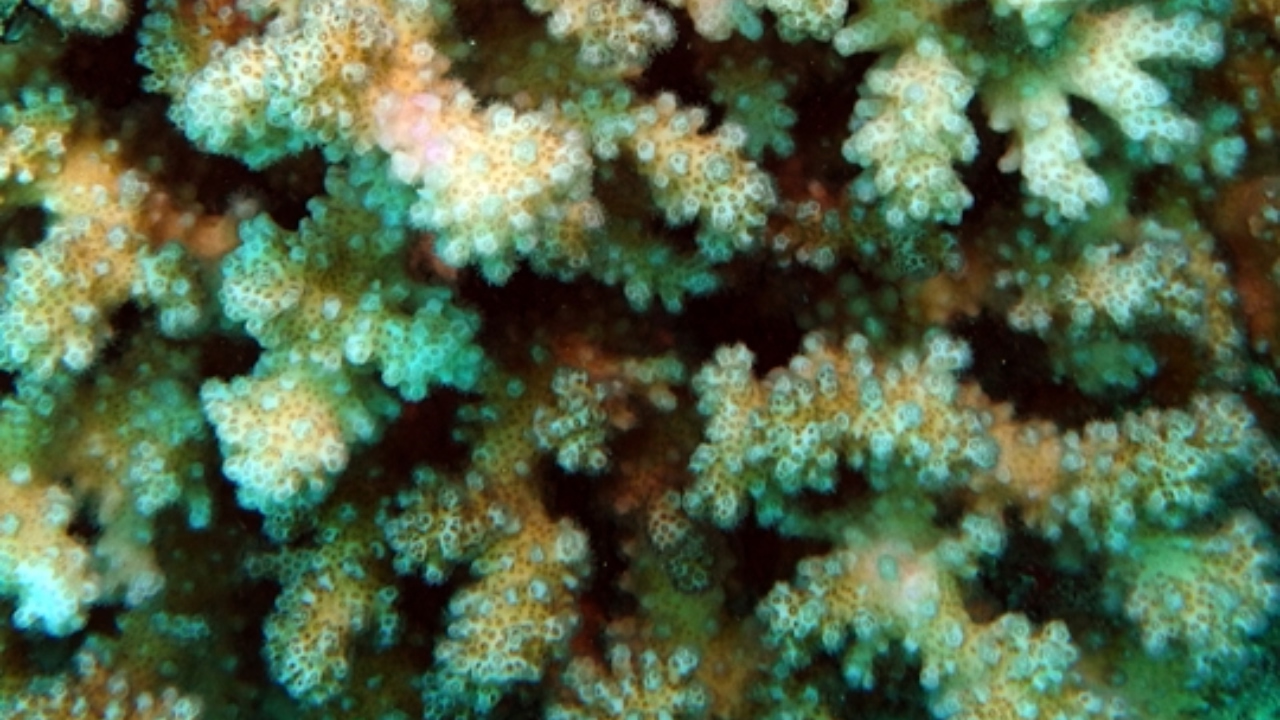
These algae live in close partnership with other organisms, like fungi or animals. Examples: Zooxanthellae (in corals), algae in lichens
Algae are divided into different groups, or divisions of algae, based on their colour, type of pigments, food storage methods, and cell structure. Each division has unique features that help scientists identify and classify them.
Understanding these divisions is important when learning about the types of algae and the characteristics of algae in general.
Algae can be classified in many ways, but one of the most common methods is based on their size and structure. This gives us two main categories: microalgae and macroalgae. Understanding this classification helps us explore the types of algae more clearly and is an important part of the general characteristics of algae.
The structure of algae varies greatly depending on the type, but in general, algae have a simple body design compared to higher plants. They can be unicellular (single-celled) or multicellular (many-celled), and their body is often called thallus because it doesn’t have true roots, stems, or leaves.
Here are the important structural features of algae:
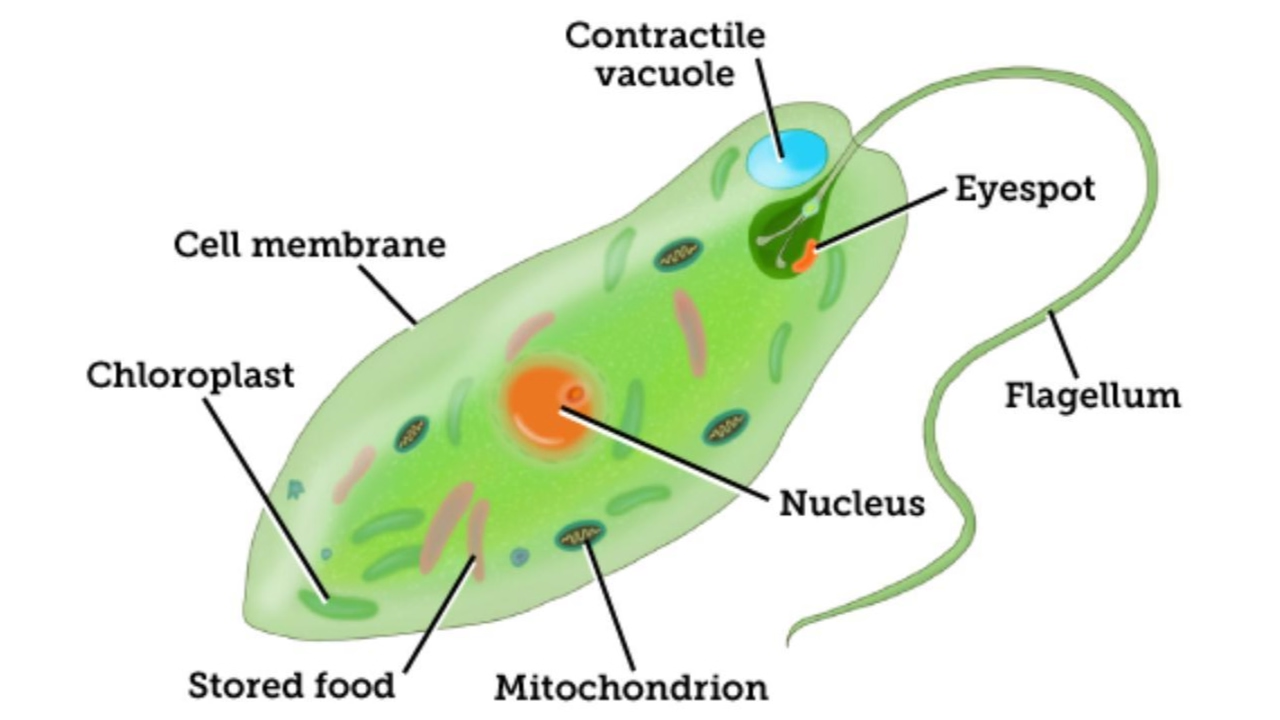
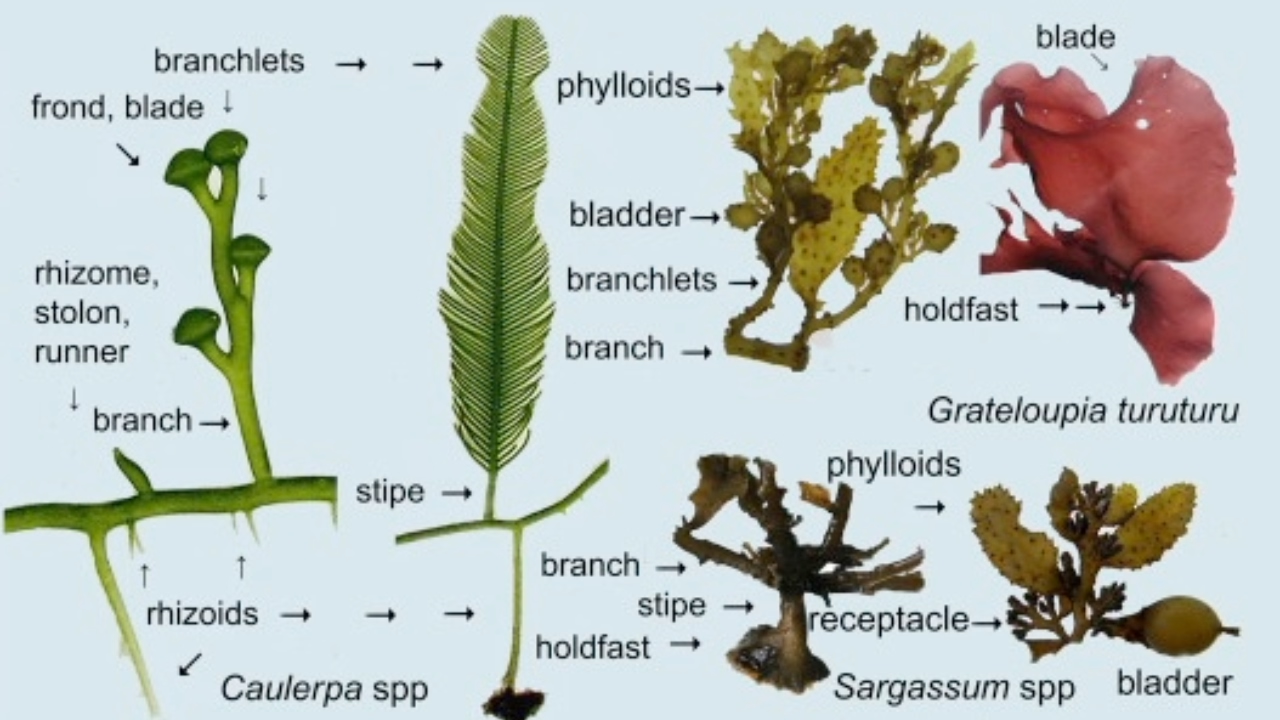
The structure of algae reflects their adaptability, allowing them to live in water, on land, or even in extreme environments like snow and hot springs.
Algae reproduce in different ways, depending on the species and environmental conditions. They can multiply through vegetative, asexual, or sexual reproduction. This flexibility helps algae grow rapidly and survive in various habitats. Understanding the types of reproduction in algae is an important part of learning about their general characteristics.
In this type, algae grow by simply dividing or breaking into pieces. Each piece grows into a new individual. Example: Spirogyra reproduces by fragmentation—where a part of the filament breaks off and grows into a new one.
Algae produce spores (tiny cells) without involving sex cells. These spores grow directly into new algae. Example: Chlamydomonas form zoospores that develop into new individuals.
Common Methods:
Involves the fusion of male and female gametes to form a zygote, which later grows into a new algal body. This process increases genetic diversity.
Types:
Algae play a vital role in both nature and everyday human life. Though often overlooked, they are essential for the environment and have many valuable uses across industries. From producing oxygen to being used in food, medicine, and agriculture, algae have countless benefits.
Algae carry out photosynthesis, just like plants, and produce a large amount of the Earth’s oxygen—especially microalgae like diatoms and cyanobacteria. They form the base of aquatic food chains and help maintain ecological balance.
Many macroalgae (like seaweed) are used in food. They are rich in vitamins, minerals, and proteins.
Examples: Spirulina (a cyanobacterium) is used as a health supplement; red algae is used in making sushi wraps.
Algae are used in the production of:
Some types of algae are being explored as a source of biofuel, offering a cleaner and renewable energy option.
Algae can absorb nutrients and heavy metals, making them useful in purifying wastewater naturally.
Algae are used to improve soil fertility and are a source of natural fertilisers and biofertilizers.
In summary, the role of algae extends far beyond the water. From supporting ecosystems to being used in modern industries, algae is incredibly valuable to both nature and human society.
Algae are some of the most important organisms on Earth. Despite their simple structure and small size, they perform essential functions that support both aquatic and terrestrial life. Their presence in freshwater, marine, and even moist land environments makes them vital to ecosystem health and sustainability.
One of the most critical roles of algae is producing oxygen through photosynthesis. Algae, especially phytoplankton, diatoms, and cyanobacteria, contribute to over 50% of the Earth’s total oxygen supply. This oxygen is not only crucial for marine life but also for all animals, including humans, who rely on atmospheric oxygen to survive.

Algae are primary producers in aquatic ecosystems, forming the very foundation of the food chain. Tiny algae like phytoplankton are consumed by small organisms such as zooplankton, which are then eaten by fish and larger aquatic animals. Without algae, these food chains would collapse, severely impacting biodiversity and food availability.
Algae absorb vast amounts of carbon dioxide (CO₂) from the atmosphere during photosynthesis. This helps reduce the concentration of greenhouse gases and mitigates the effects of climate change. Marine algae, especially in large numbers, act as a natural carbon sink, helping stabilise global temperatures.
Algae play an important role in nutrient cycling, particularly in aquatic environments. They absorb and store nutrients like nitrogen, phosphorus, and potassium, which are then passed through the food web. When algae die and decompose, these nutrients are released back into the water, making them available for other organisms and helping to maintain ecological balance.
Macroalgae (such as seaweeds) offer physical structure and shelter to many marine species. They provide safe breeding grounds, hiding spots, and protection from predators for fish, molluscs, crustaceans, and other marine animals. Algae-rich areas like kelp forests are known to support high levels of marine biodiversity.
Some algae can absorb and break down pollutants, including heavy metals, nitrates, and phosphates from wastewater. These properties make algae useful in bioremediation and wastewater treatment, where they help clean polluted water naturally, reducing the need for chemical treatments.
Certain algae, particularly cyanobacteria, can fix atmospheric nitrogen into the soil, enriching it and improving its fertility. This is especially beneficial in rice fields and poor-quality soils, where natural fertilisation by algae reduces the need for synthetic chemicals.
Industrial Uses of Algae
Algae are not only important—they also offer valuable benefits across various industries. Their unique chemical makeup and sustainability have made them a key resource in sectors like food, energy, pharmaceuticals, and cosmetics.
1. Food Industry
Algae are widely used in the food industry as additives, thickeners, and health supplements. Two of the most commonly used products derived from algae is:
Additionally, Spirulina and Chlorella (types of microalgae) are used in health supplements for their high protein, vitamin, and mineral content.
2. Biofuel Production
Certain species of algae, especially microalgae, are rich in lipids (fats), which can be processed into biofuels such as biodiesel. Algae grow quickly, require little land, and can be cultivated using wastewater, making them a sustainable and eco-friendly alternative to fossil fuels. Research in algal biofuels is ongoing and shows great promise for future energy needs.
3. Pharmaceutical and Cosmetic Uses
Algae are used in the pharmaceutical industry for their antioxidant, anti-inflammatory, and antiviral properties. Extracts from algae is found in:
Alginates, fucoidans, and other algae-derived compounds are added to creams, lotions, and serums due to their skin-soothing and healing effects.
While algae is incredibly important for the environment, they can also have harmful effects under certain conditions. When algae grow uncontrollably in water bodies, they form what is known as an algal bloom. These blooms can harm aquatic life, affect water quality, and even pose health risks to humans and animals.
When large numbers of algae die and decompose, the process uses up oxygen in the water. This can lead to dead zones, where aquatic animals like fish and insects cannot survive.
Algal blooms can make water murky, smelly, and unsuitable for drinking or recreational activities. It can clog water filters and affect the taste and smell of water supplies.
Some algae, especially toxic cyanobacteria, produce harmful toxins that can affect the liver, nervous system, and skin of animals and humans. These toxins can enter the food chain through contaminated water or fish.
Thick algal layers block sunlight, reducing photosynthesis in underwater plants. This affects the entire aquatic ecosystem, reducing biodiversity and altering food chains.
Fisheries, tourism, and water treatment facilities can suffer financial losses due to toxic blooms and water contamination.
An algal bloom is a rapid and excessive growth of algae in water, usually caused by a sudden increase in nutrients such as nitrogen and phosphorus. These blooms often appear as green, red, brown, or blue layers on the surface of lakes, rivers, or seas.
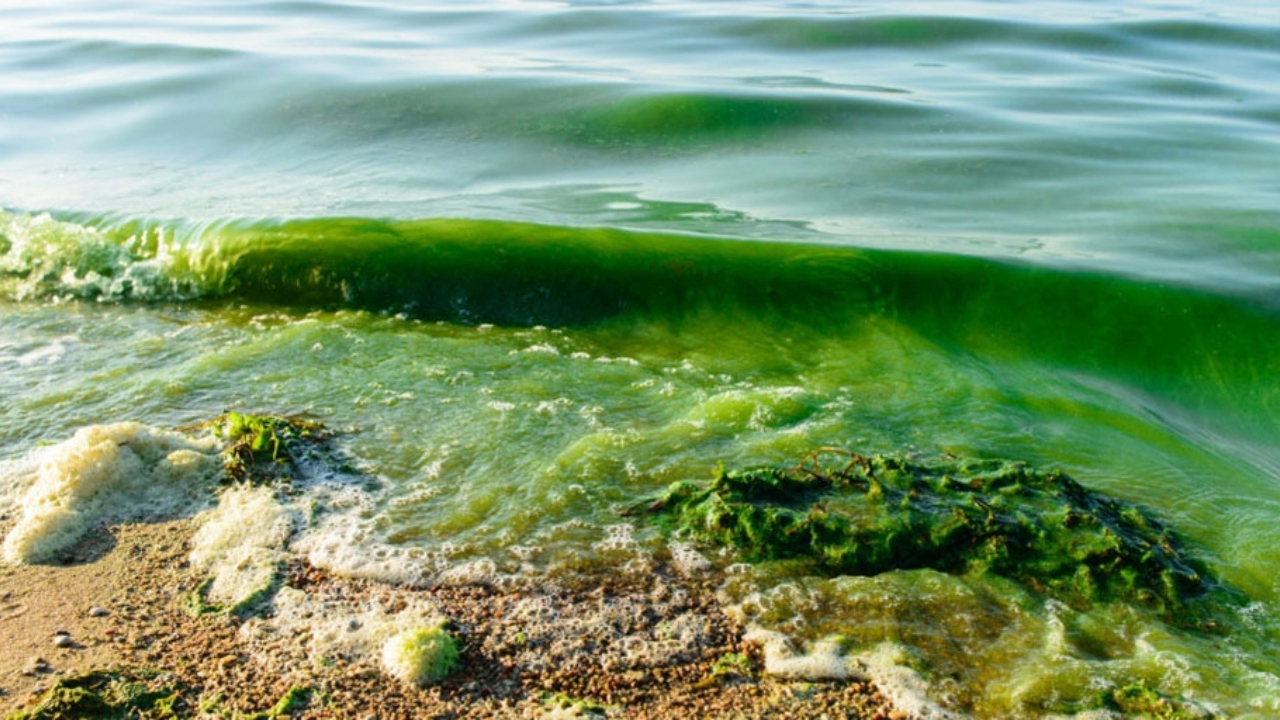
Algal blooms usually occur in warm, slow-moving water, especially when there is pollution from fertilisers, sewage, or agricultural runoff. Some blooms are harmless, but others—especially those caused by cyanobacteria (blue-green algae)—can produce harmful toxins.
Excessive algal growth, often leading to harmful algal blooms, can damage water ecosystems, harm aquatic life, and affect water quality. Thankfully, there are several practical ways to prevent and control algal overgrowth in natural and man-made water bodies.
The main cause of excessive algae is too many nutrients—especially nitrogen and phosphorus—in the water. These often come from:
To reduce this:
Stagnant water encourages algal growth. Increasing water movement can help:
Algae need sunlight to grow. Reducing sunlight penetration can limit their growth:
Certain fish and aquatic animals feed on algae, helping to keep their population under control. Examples include:
In some cases, algaecides (chemicals that kill algae) can be used. However, they should be:
Educating farmers, communities, and industries about the effects of nutrient pollution is essential. Regular monitoring of water quality helps detect early signs of algal bloom and take action quickly.
Excessive algal growth is a growing concern in both natural and artificial water bodies. While algae is vital to aquatic ecosystems, their overgrowth can lead to harmful consequences such as oxygen depletion, toxic blooms, and loss of biodiversity. By taking preventive measures like reducing nutrient pollution, improving water circulation, and encouraging natural algae control—we can protect our water resources and maintain ecological balance. A combination of community awareness, sustainable practices, and regular monitoring is key to managing algal growth effectively and ensuring a healthy environment for future generations.
